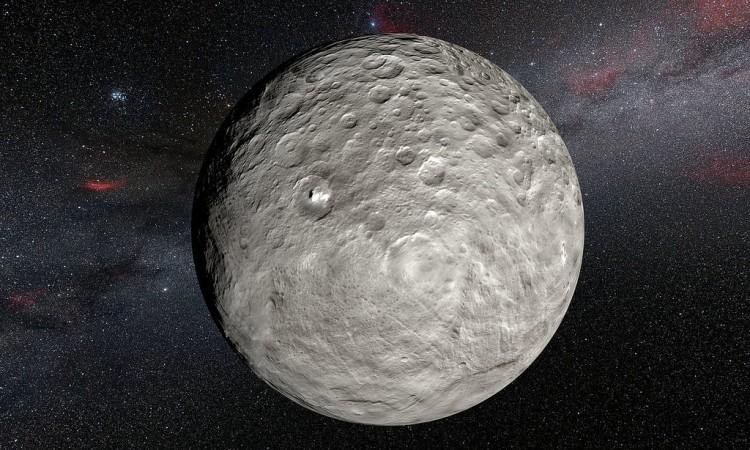
A huge ice volcano estimated to roughly be half the size of Mount Everest has been discovered on Ceres, the dwarf planet found between Mars and Jupiter.
NASA's Dawn spacecraft has enabled a team of scientists to use image data to study the 4km high cryovolcano formation. It has been dubbed Ahuna Mons. In a study published in Science, images from Dawn showed a dome-shaped mountain with an elliptical base and a concave top.
Ottaviano Ruesch, from NASA's Goddard Space Flight Centre, and colleagues used Dawn Framing Camera Images to identify Ahuna Mons. They say the cryomagma includes salts and water ice.
Cryovolcanoes are volcanoes that spout volatile materials like water or methane instead of molten rock. Though their existence was propounded in the past, scientists lacked evidence to prove their claims.
Similar features have been found on Saturn's moon Enceladus and are believed to be present on a number of other moons in the Solar System, including Europa, Titan, and Ganymede.
Scientists studying the geological feature argue that it is around 200 million years old. They also believe that there is no evidence of erosional features or compressional tectonism, therefore suggesting that the dome of Ahuna Mons "formed mostly through extrusion." Extrusion is a phenomenon where the eruption of material makes a volcano grow on the outside.
"For the formation of Ahuna Mons, we thus propose a volcanic process involving ascent of cryomagma and extrusion onto the surface followed by dome development and spreading," the team wrote. They said a long-term heat source in Ceres' interior, coupled with suitable materials led to the production of cryomagma, but add measurements of minerals and gravity will be needed to better understand the composition of the mountain.









